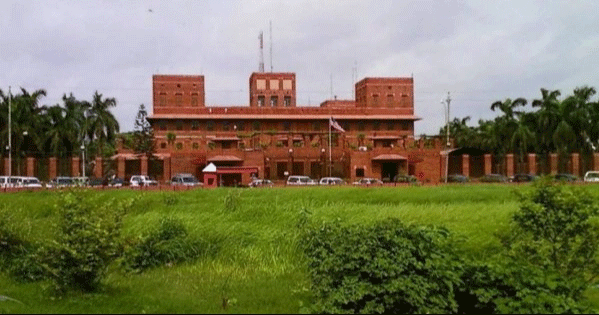Untapped potentials of shrimp sector in Bangladesh
17m people engaged, Tk 82.456 cr earning annually
Mahfuja Mukul: Shrimp is one of the key export items of Bangladesh and makes up about 70% of the total agricultural exports. That is why shrimp is usually referred to as “White Gold” in Bangladesh. A total of 56 species of shrimp has been found in Bangladesh out of which 37 are sea water shrimps, 12 are brackish water shrimps and 7 of the species reside in freshwater. Although 95% hatcheries are located in the south-eastern districts of Khulna, Bagerhat and Satkhira, the shrimp processing industry is also growing in Chittagong and Dhaka. Approximately, a volume of more than 275,000 hectares is being used for the purpose of farming shrimp in Bangladesh. Bangladesh has produced almost 2 lakh tons of shrimp during the year 2018-19 and have made a profit of US$ 348 million from export in 2020.
Fish and fisheries are one of the prime items in Bangladesh’s agricultural products. About 12%, which is about 17 million of the total population, are dependent on the fishing industry. Out of which almost 1.4 million are women. Meanwhile, 13.35% of the country’s GDP during the financial year of 2018-2019 is contributed by the agricultural sector, of which 3.52% came from fisheries. Bangladesh earned Tk 74,274 crore during the financial year of 2018-2019 from the fishing industry, which increased during 2019-2020 up to Tk 82,456 crore.
According to a report by the Food and Agriculture Organization of the United Nations, in 2017, Bangladesh ranked 3rd in the world in terms of domestic fish production. According to the Yearbook of Fisheries Statistics for the fiscal year 2018-19 of the Ministry of Fisheries and Livestock of Bangladesh, the country’s fisheries sector has grown at an average rate of 5% per annum in the last decade.
About 60 percent of the total population’s protein needs are fulfilled with protein from fish. Although there is no exact information on the number of fish farms in the country at present, according to a survey, there are a total of 1128 hatcheries in the country, including 143 at the government level and 975 at the private level. In the last few decades, fish production in Bangladesh has increased almost 6 times.
In the financial year 1983-84, the total amount of fish produced in Bangladesh was 7.54 lakh metric tons. Whereas, the total amount of fish produced in FY 2018-19 was about 44 lakh metric tons. In that year, Bangladesh exported more than 73,000 metric tons of fishery resources and earned about Tk 4,200 crore.
Shrimp is the biggest contributor to the fisheries of Bangladesh. There are several steps from starting from the production of shrimp larvae to the consumer. Shrimp larvae basically refer to the newly hatched shrimp lings from shrimp eggs. The larvae are cared for in different hatcheries and handed over to the shrimp farmers after a certain period of time. At the end of cultivation, the mature shrimps are divided into four sectors which are local vendors, merchants, depots and wholesalers.
The shrimp usually reaches the depot and wholesaler from the local vendors and merchants. However, in some cases, the depot and the wholesaler collect the shrimp themselves, processes it and sends it directly for sale or export. Although no exact information is available on the amount of shrimp consumed in Bangladesh, most of the revenue generated in the shrimp sector is through exports. With the increase in demand for shrimp in the international market, the shrimp farming area is also expanding in the coastal areas of the country. As a result, the area of shrimp farms has increased to 265,000 hectares in a few years.
A number of initiatives have been taken to bring more dynamism in the shrimp industry such as registration and licensing of all shrimp farms, expansion of training and environment friendly shrimp farming technology along with quality-controlled fish processing. As part of the implementation of a traceability system in the shrimp sector, registration of about 2 lakh 6 thousand shrimp farms and 9 thousand 751 commercial fish farms have already been completed. According to data found in the Yearbook of Fisheries Statistics of Bangladesh in the financial year 2016-17, the total amount of shrimp produced in Bangladesh was about 250,000 metric tons.
However, in the 2018-19 financial year, the production decreased slightly to about 240,000 metric tons. According to the Bangladesh Ministry of Fisheries and Livestock, Bangladesh earned about 348 million US dollars by exporting 30,000 metric tons of shrimp in the 2019-20 fiscal year. Which was about 365.44 million in the 2018-19 fiscal year.
Major Players
Achia Sea Foods Ltd of Khulna, Marine Fresh Bangladesh, Acqua International, Noakhali Gold Foods Ltd., Bengal Fisheries Ltd. and AK Khan & Co. are some of the major companies involved in the shrimp production and export industry in Bangladesh. About 80% of the country’s shrimps are produced and exported privately.
In 1986, the Department of Fisheries (DOF) established the first shrimp hatchery in Bangladesh at Cox’s Bazar. By 2014, the number of shrimp hatcheries in Cox’s Bazar stood at 57, which is 5 percent of the total hatcheries in the country. The remaining 95 percent of hatcheries are located in Khulna, Bagerhat and Satkhira in southeastern Bangladesh. There are also several hatcheries in Dhaka and Chittagong.
Comparison with International market
Besides Bangladesh, countries like China, India, Pakistan, Japan, Vietnam, Germany, and the Netherlands are involved in shrimp exports to the world market. India is the world’s largest exporter of shrimp, accounting for about 25 percent of the world’s demand, and Ecuador is the second largest exporter at 21.1 percent. As an Asian country, Vietnam exports 11.1 percent, Indonesia 8.3 percent and Thailand about 4 percent. On the other hand, Bangladesh ranks 9th in the world with 2.1 percent shrimp exports.
In 2020, India exported about 6 lakh metric tons of shrimp, which is more than Bangladesh. On the other hand, Vietnam exported about 4 billion worth of shrimp in 2020, while Bangladesh’s export income in 2020 was only 348.55 million. While the amount of shrimp exports from other countries is constantly increasing, why is Bangladesh lagging behind the rest?
Reasons behind thesector is lagging
Hatcheries still rely on wild shrimp from rivers, canals and seas to procure larvae used for shrimp farming in Bangladesh. These naturally collected shrimps are often infected by various viruses. As a result, the infections are also found in shrimplings, which also affects the growth and health of shrimp. In 2014, the Ministry of Fisheries and Livestock allowed the import of Specific Pathogen Free (SPF) shrimp and its larvae. Currently three hatcheries in the entire country are producing SPF larvae. One of the hatcheries, MKA Hatchery, said it could produce only 500 million SPF post-larvae a year. On the other hand, since no SPF larvae of other species of shrimp are produced in the country, hatcheries are dependent on completely wild shrimp for the production of larvae of shrimps.
Lack of Technology
Although shrimp is cultivated in about 275,000 hectares of land along the coast of Bangladesh, shrimp production is quite low in proportion to the land. The shrimp production per hectare is only 333 kg, and the giant freshwater prawn production is about 600 kg. On the other hand, in the total shrimp production of Bangladesh, Bagda Shrimp is cultivated in an area of about 269 thousand hectares whereas giant freshwater prawn is cultivated in an area of only 3440 hectares. In addition, hatcheries in Bangladesh are used in the old Extensive method or gher system instead of following the modern Intensive or Semi-Intensive method like the top countries in shrimp production. Intensive and Semi-Intensive methods, Extensive methods can produce several times more shrimp per year. Intensive and Semi-Intensive methods, Extensive methods can produce several times more shrimp per year. However, the cost is much higher due to the use of skilled manpower and advanced technology in the Intensive and Semi-Intensive methods as compared to the Extensive method. As a result, many hatcheries in Bangladesh have not yet adopted this advanced technology. Besides, there is no integrated cold chain management system in Bangladesh for shrimp export. As a result, a lot of freshness and quality is lost in the transportation of shrimp during export. As a result, Bangladesh’s shrimp reputation in the world market is declining. Besides, the lack of traceability and transparency in the shrimp supply chain of Bangladesh is quite noticeable. Most of the country’s producers and exporters lack internationally recognized certification due to the use of old technology and non-compliance with international standards. Incidents like weight manipulation and product mislabeling are also questioning the shrimp export sector in Bangladesh. Increasing the use of skilled manpower and advanced technology in these areas will increase the overall production and export of shrimp in Bangladesh.
Poor logistic
Most of the hatcheries in Bangladesh are located towards Khulna, Bagerhat and Satkhira in the southeastern part of the country. However, the post larvae of the shrimp farmed are mainly produced in the hatcheries located in Cox’s Bazar. The produced post larvae are used only by road and air transport to reach the farming hatcheries from there. Most of the shrimp farmers in Bangladesh cannot afford to use air transport. In order to avoid additional costs, farmers prefer road transportation. As a result, 28 to 30 percent of post larvae die during transport due to water scarcity and transport problems. On the other hand, the surviving larvae become quite weak, which also reduces the production of shrimp.
Low yielding species
Among the shrimps produced in Bangladesh, Giant Tiger Shrimp and Giant freshwater prawn are the main export items. The price of these two varieties of shrimp has been fixed much higher than other varieties of shrimp. Local exporters sell shrimp for about 9 US dollars per pound. Competing countries, on the other hand, produce Vannamei shrimp, which sell for just 2 to 2.5 dollars per pound. Countries like Ecuador, Argentina, Thailand, Vietnam, and India are producing more and more Vannamei shrimps. On the other hand, hatcheries in the country could not produce this species of shrimp due to the ban imposed by the Bangladesh government. As a result, the production and export of these countries have increased. As a result, to survive in the competition, Bangladesh is currently exporting shrimp at 8 US dollar per pound. However, in 2020, the government has allowed a limited number of hatcheries to cultivate this high-yielding species of shrimp.
To increase the marketing and export of shrimp, Bangladesh needs to focus on producing high quality shrimp. Care needs to be taken to ensure that the larvae produced in the country can be collected from disease-free shrimps. In addition, degradation of shrimp can be prevented by minimizing the time during relocation by making transportation & logistics more flexible. Besides, to meet the demand of the country, it is possible to make the shrimp export sector of Bangladesh more famous by increasing the country’s exports by keeping the current situation in the world market along with the supply of shrimp at comparatively low prices. What do you think?
President Joe Biden tests positive for COVID-19 while campaigning in Las Vegas, has ‘mild symptoms’
International Desk: President Joe Biden tested positive for COVID-19 while traveling Wedne…








